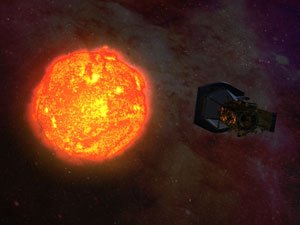U of M to get $7 million for NASA trip to the Sun

Contacts:
Rhonda Zurn, College of Science and Engineering, rzurn@umn.edu, (612) 626-7959
Preston Smith, University News Service, smith@umn.edu, (612) 625-0552
MINNEAPOLIS / ST. PAUL (09/08/2010)—Researchers in the University of Minnesota's College of Science and Engineering will be part of an experiment on NASA's Solar Probe Plus, a spacecraft that will travel closer to the sun than ever before. NASA recently announced a $7 million grant to the University as part of the $180 million SPP project. The project is slated to launch no later than 2018.
The University of Minnesota is participating in the FIELDS experiment, one of four instrument suites aboard the spacecraft. Part of the FIELDS suite is an instrument called the Time Domain Sampler (TDS), which will measure electric and magnetic fields, radio emissions and shockwaves that course through the environment of the sun. The College of Science and Engineering's School of Physics and Astronomy associate program director Keith Goetz and his team developed the TDS. The spacecraft will travel to within four million miles of the sun’s surface.
The principal investigator of the FIELDS experiment is University of Minnesota alumnus and current physics professor Stuart Bale, now at the University of California Berkeley (UCB) and director of the UCB Space Sciences Lab. The University of Minnesota’s Goetz, physics professors John Wygant and Cynthia Cattell as well as physics professor emeritus Paul J. Kellogg, all of the School of Physics and Astronomy, will all participate in the project.
"Solar Probe Plus is really the most interesting mission we can do in the field of space physics," said Goetz. "Going so close to the sun will allow us to determine the mechanisms that lead to the million-degree solar corona as well as the million-miles-per-hour stream of charged particles from the sun called the solar wind."
"This project allows humanity's ingenuity to go where no spacecraft has ever gone before," said Lika Guhathakurta, SPP program scientist at NASA headquarters in Washington, D.C. "For the very first time, we'll be able to touch, taste and smell our sun."
The Solar Probe Plus mission is part of NASA's Living with a Star Program. The program is designed to understand aspects of the sun and Earth's space environment that affect life and society. NASA’S Goddard Space Flight Center with oversight from NASA’s Science Mission Directorate’s Heliophysics Division manages the program.
For more information about the Solar Probe Plus mission, visit: http://solarprobe.gsfc.nasa.gov or or http://solarprobe.jhuapl.edu.
